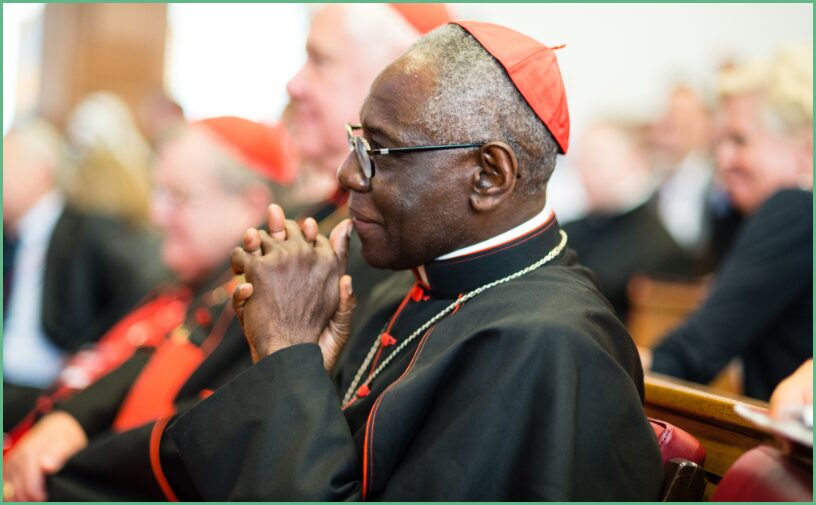The former prefect of the Dicastery for Divine Worship and the Discipline of the Sacraments is urging a renewed emphasis on sacred tradition and reverent liturgy, arguing that worship shaped by beauty and solemnity deepens faith and draws people back to the pews. This piece looks at his message, how congregations are responding, and the practical ways communities might recover practices that foster awe, prayerful silence, and clear sacramental focus.
Cardinal Robert Sarah, who served as prefect of the Dicastery for Divine Worship and the Discipline of the Sacraments, has been a steady voice for liturgical seriousness and historical continuity. He frames his appeal not as nostalgia but as a pastoral priority: when the liturgy is reverent, people encounter something holy and are more likely to be formed by it. His standing in the Church gives weight to calls for recovery of traditional elements that many feel have been lost.
The core of his argument centers on sacred tradition and rites that communicate mystery and transcendence. He highlights practices like structured prayer, reverent gestures, sacred music, and deliberate silence as vehicles that help worshipers move from distraction to devotion. The goal is to cultivate liturgies that act as authentic encounters with God rather than purely social gatherings.
Musical choices come up often in this conversation, with chant and well-executed sacred music presented as tools that lift the heart and mind. Cardinal Sarah and like-minded pastors argue that certain musical forms resist casualness and reorient attention toward worship. When music supports the ritual rather than competing with it, the overall sense of prayer is strengthened.
Architectural and aesthetic elements also matter to this vision of reverent worship, because space shapes behavior and expectation. Thoughtful design, clear liturgical furnishings, and the use of traditional vestments signal that something other than everyday activity is taking place. These cues help congregations prepare mentally and spiritually for participation in the sacred mysteries.
Across different parishes, the reaction to renewed emphasis on reverence has been notable, with many churches reporting fuller attendance at solemn celebrations. For some Catholics, the return to chant, incense, and more formal ritual has been a reclaiming of identity and a remedy for spiritual drift. Others are cautious and stress the need for pastoral sensitivity so changes do not alienate those who are newer to the faith.
Critics warn that a focus on form can become legalistic if it lacks charity and outreach, and the cardinal acknowledges the need to balance tradition with pastoral care. He frames the recovery of reverence as a means to deepen evangelization, not to erect barriers. In practice that means pairing liturgical renewal with clear teaching, hospitality, and programs that welcome seekers and support formation.
Practical steps advocated by proponents of reverent worship include improved liturgical formation for clergy and laity, more robust music programs, and intentional catechesis about the meaning of rites. Training sacristans, investing in choirs, and offering workshops on liturgical posture and participation are common proposals. These are concrete, parish-level actions aimed at making liturgy intelligible and beautiful again.
There is also a pastoral angle: liturgy shaped by tradition can help families, young people, and older generations find a common worship language. When the rites are carefully celebrated, they provide a steady spiritual anchor amid cultural change. Supporters say that regular exposure to solemn liturgy forms a kind of spiritual grammar that nourishes prayer life beyond the church walls.
The ongoing conversation around sacred tradition and reverent practice is less about rejecting modern pastoral needs and more about rediscovering tools that have historically formed Christian communities. Many who champion this approach see it as an invitation: to engage ancient practices with fresh pastoral imagination, to teach their meaning, and to let reverence be a bridge that draws people into deeper encounter rather than a wall that keeps them out.
